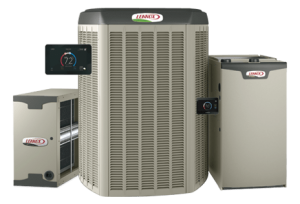
 The Gas Furnace Guide: When to Replace?
The Gas Furnace Guide: When to Replace?
Gas is the most common heating fuel in todays furnace market. Replacing old furnaces in your central heating system with a newer gas powered furnace will offset volatile energy costs. Putting money savings aside, todays’ furnaces produce much lower emissions, and heat your home much more steadily (getting rid of those “cold spots” in your home. To sum it up, gas powered furnaces are the best bet for the average home in Southern Maryland, so we’re going to focus mostly on those!
First and Foremost
Yes, all gas burning furnaces these days are better in every way than older models, even when they use different types of fuel (electricity, propane, etc.). We’re reporting on the study done by Consumer Reports. You’ll love the fact that if you have to replace parts for your new gas furnace moving forward, you’re going to spend $.40 cents for every $1.00 dollar you’d spend on an older model gas furnace in Southern Maryland.
For example (Consumer Reports analyzed over 20,000 of their subscribers):
If you had to repair your older furnace, lets say your bill is $1000…
However if you had to repair a newer (2016 or later) gas furnace, you’d only spend $400 for the same type of repair…!
We love servicing and installing newer gas furnaces, because that means you’re going to save money if anything happens; both long-term and short-term.
What to consider when upgrading
You should always call a couple professional HVAC companies to get estimates for the best possible deal you can get for your family. We’d love to be your first stop, especially since we offer base pricing, which offers the best prices we can in the industry.
Furnace Size
A furnace’s specifications should fit the size of your home and your families needs. Especially because of the ever-changing climate in Southern Maryland, you’ll want to make sure your unit doesn’t have to work too hard on the extremely cold days, and can get through the mild parts of winter with relative ease. If a furnace has to work too hard the components will wear down much faster than it should. Conversely, if you’re furnace is too large for your home, it’ll turn off and on too frequently, which will waste energy. We like to help you pick a furnace that’s just a little bigger than it should be, and you’ll get the best of both worlds. But that’s why it’s best to call us before making any decisions.
The Best Part
We exclusively use software called “iManifold” to test the efficiency of comfort units in your home. 90% of the time, customers call us before their unit completely fails. This allows us to test the unit they currently have. Generally speaking (in Southern Maryland), because of our climate we recommend 40-45 BTU’s per square footage of your home. So if your home is 2000sq/f you should have at least 80,000-90,000 BTU’s on your unit.
To give some perspective, if you live in Maine you should have 50-60 BTU’s per square foot in your home. If you live in Maine and your home is 2000sq/f, you should have 100,000-120,000 BTU’s on your unit, because it’s going to get much colder up there in the winter (and with longer winters).
We can test how well your unit is working in your home before you actually get a replacement. The information from our “iManifold” analysis will tell us if we need to change the size of your unit based on how well your old unit worked in your home.
When to Start Planning for Replacement
Furnaces typically have an average lifespan of 15-18 years. Of course that’s if it’s maintained (and we do offer maintenance agreements, which will turn a 7 year unit into a 18+ year furnace). If your unit is less than 15 years old, we will do everything we can to prevent you having to replace it. However, if your finding more and more problems with an aging furnace, we’ll make sure you’re in the best hands and we also can help make sure you don’t have to pay for it all at one time!
NOV
2018
